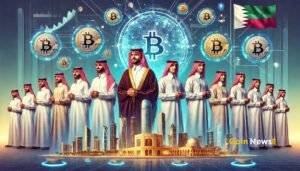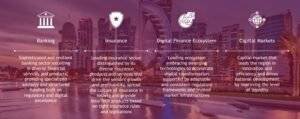Recently, Qatar has taken the first step towards regularizing digital assets with a new far-reaching regulatory framework introduced by QFC (Qatar Financial Centre). The framework is used to monitor various issues that revolve around digital assets regulation such as tokenization, custody, exchanges, and smart contracts.
In Malay Mali Online, it is a move to develop a safe and clean ecosystem for innovation as well as attract foreign investments.
This is mostly due to the interest of Qatar, which opened by essentially higher ways for the financial market even though it actually banned coins from being used and is getting over a digital overhaul since adopting its Third Financial Sector Strategy 2011-2022.
Digital Assets Regulation
Qatar’s QFC recently introduced a comprehensive regulatory framework for Digital Assets Regulation. This initiative aims to establish clear guidelines and oversight for digital asset activities within Qatar’s financial market. The framework provides a robust and secure environment for the growth and development of digital assets, ensuring investor protection and fostering innovation. This regulatory milestone demonstrates Qatar’s commitment to embracing the digital era while prioritizing a safe and transparent financial landscape.
Highlights of the Framework:
Here are some key highlights of Qatar’s regulatory framework for digital assets:
Tokenization and Digital Asset Management

Issuance, trading and custody of digital assets are included among the activities regulated under the new rules.
It is a bid to establish an orderly and regulated new market where consumers can be offered digital utilities or other real-life use cases.
Smart Contracts & Legal Recognition

It is a framework that legalizes digital tokens and smart contracts to enable secure and compliant transactions. The designation is a major step for digital assets to be included into the standardized financial system.
Compliance and Security

In order to help preserve the integrity of markets as well as investor protection, they feature strong risk management protocols and compliance with anti-money laundering (AML) and counter-financing of terrorism CFT standards.
Acceptance of cryptocurrencies banned

The framework is geared to address digital assets in general, and while it makes no mention of Bitcoin or other cryptocurrencies directly (except where the definition of ‘security tokens’) is referenced without a formal distinction enforced), less conventional tokenized products based on real-world items.
Industry Collaboration

This framework was developed in collaboration with 37 industry organizations, such as digital asset exchanges and custodians, to ensure that the market for trading digital assets is regulated effectively.
Investment Attraction

We must offer a transparent and confidence-inspiring regulatory atmosphere that encourages competition between various local and global players, with Qatar thereby enhancing its competitiveness in the world market.
Qatar’s Strategic Synthesis
This new initiative for a digital asset regulatory framework is an important milestone for Qatar in the field of electronic transformation. This is consistent with the government’s overall goals for a stronger finance sector and more attractiveness to foreign funds. Qatar moves to the forefront of financial novelty by developing a framework for digital asset development and management.

Foreign ownership at the QFC can be up to 100%, that will make the establishment of operations in Qatar even more attractive to international companies. It is hoped that this regulatory clarity and pro-crypto environment will enhance Qatar as a financial services sector, including attracting global digital asset service providers with an extensive range.
In all, the regulatory framework for digital assets now in place in Qatar is a progressive adoption of advancement with necessary regulation. Besides making the jump, Qatar is also gearing up for the crucial role in what will soon become a $15 trillion digital economy.












